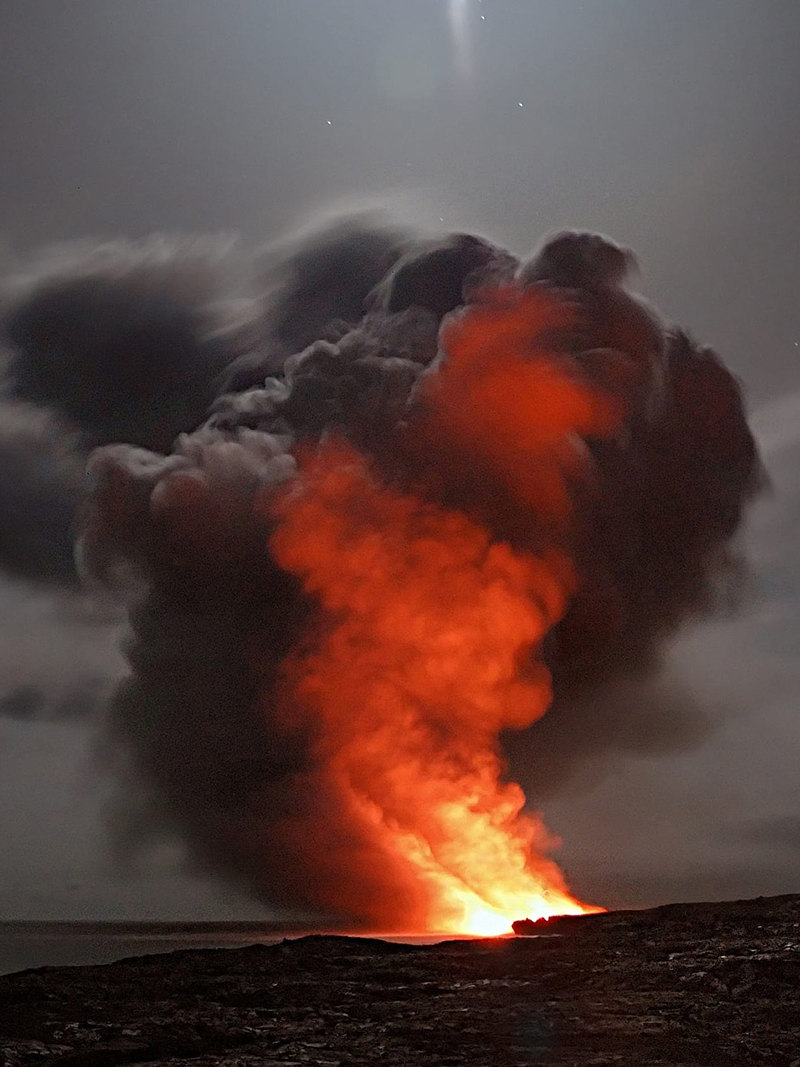
“INFORMATIONAL PRESENTIMENT”
AS A PREDICTIVE HARBINGER
OF THE COVID-19 PANDEMIC
AS A PREDICTIVE HARBINGER
OF THE COVID-19 PANDEMIC
And it is also shown that for some period before the Pandemic, the number of patents in the industries that benefited most from the Pandemic increased.
Almost everything surrounding the modern human is man-made, artificial.
Because of this, patent information is a source of up to 80% of all the technical information about our world.
Like any other well-structured statistical system or database, patent information contains a rich source of new knowledge, and this new knowledge takes shape according to the specific laws that objectively govern any sphere of human endeavor.
The information contained in patent documentation can be classified into two types of Knowledge:
-Conscious Knowledge
-Intuitive Knowledge
Intuitive Knowledge is a sort of “added value” to Conscious Knowledge, a sort of “Informational Presentiment”
Intuitive Knowledge is also stored at the intuitive level within statistical documentation (databases).
Any well-structured database contains a unique form of “informational presentiment.”
Conscious knowledge serves as the basis for advanced forecasting methods, which are based on the use of the properties of scientific or technical information to predict scientific and technological progress.
Any well-structured database contains a unique form of “Informational Presentiment”
Patent documentation, in this case, is in a rather privileged position.
Patenting technologies is an expensive endeavor, and it is precisely for that reason that it can be a sufficiently precise predictive indicator: patent information contains less informational noise and static.
In this case, we are interested in “Intuitive Knowledge”.
For example, we are sure that a few years before the economic crisis, inventors should reduce the number of applications for inventions related, for example, to luxury goods and so on.
But, it should be noted that for some period before the onset of the economic crisis, some financial analysts warned about its possibility.
But what really caught people off guard was the Covid-19 pandemic.
We checked the information on how the number of patent applications for certain objects changed over the period of time before the announcement of the pandemic.
First of all, we found out which branches of human activity lost profits due to the pandemic.
And which industries profited from the pandemic.
It must be said that we use the concepts of “lost profit or gained profit” only to evaluate statistics.
Of course, the pandemic has become a tragedy for many people. A lot of them lost their lives and material values.
But, we are well aware that the results of these studies can help in predicting future disasters.
The following industries have lost profits:
-Tourism (Fig. 1);
-Hotels (Fig. 2);
-Restaurants (Fig. 3);
-Buying Tickets (Fig. 4);
-Paper Media (Fig. 5)
The following industries have made a profit:
-A61L (COOPERATIVE PATENT CLASSIFICATION) - methods or apparatus for sterilising materials or objects in general; disinfection, sterilisation, or deodorisation of air; chemical aspects of bandages, dressings, absorbent pads, or surgical articles; materials for bandages, dressings, absorbent pads, or surgical articles (Fig. 6);
-Food Delivery (Fig. 7);
Also Internet Services, Video games, Table games and so on.
Then we used a method that anyone, even without special training, can very easily repeat and use. We have entered keywords on the service https://patents.google.com and we got the following result.
The graphs clearly show that for some period before the Pandemic, the number of patents obtained in those industries that were most affected by the Pandemic decreased.
This is the “Informational presentiment” (“Intuitive knowledge”).
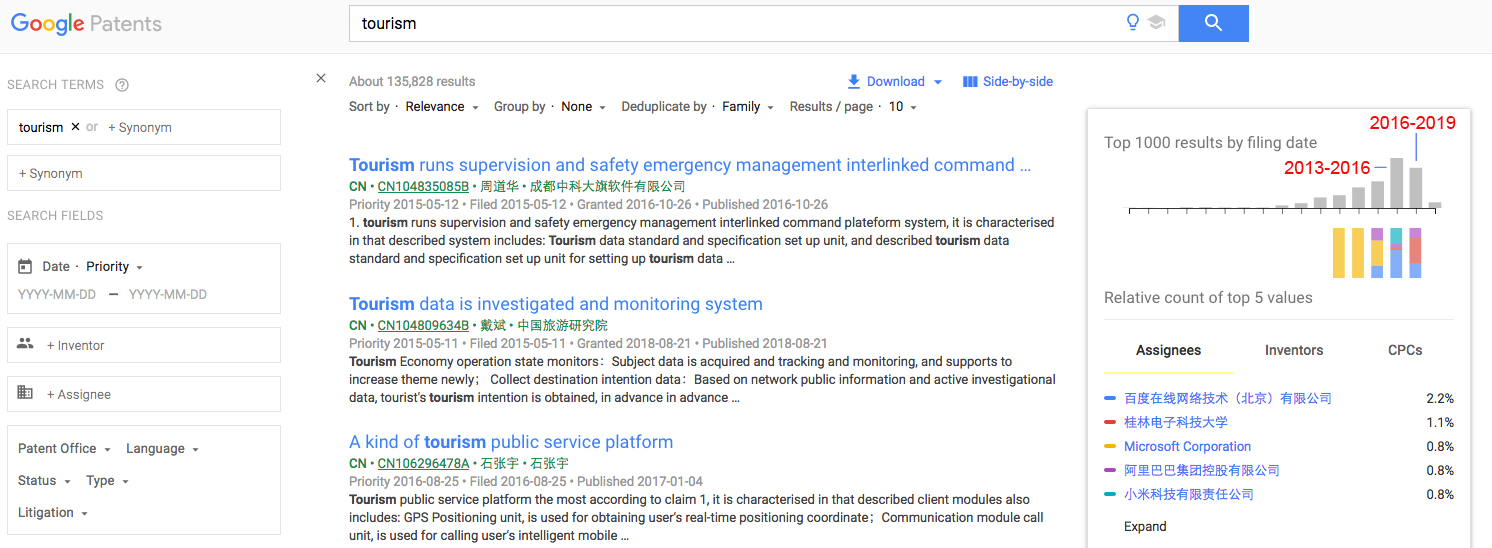
https://patents.google.com/?q=tourism&oq=tourism

https://patents.google.com/?q=tourism&oq=tourism
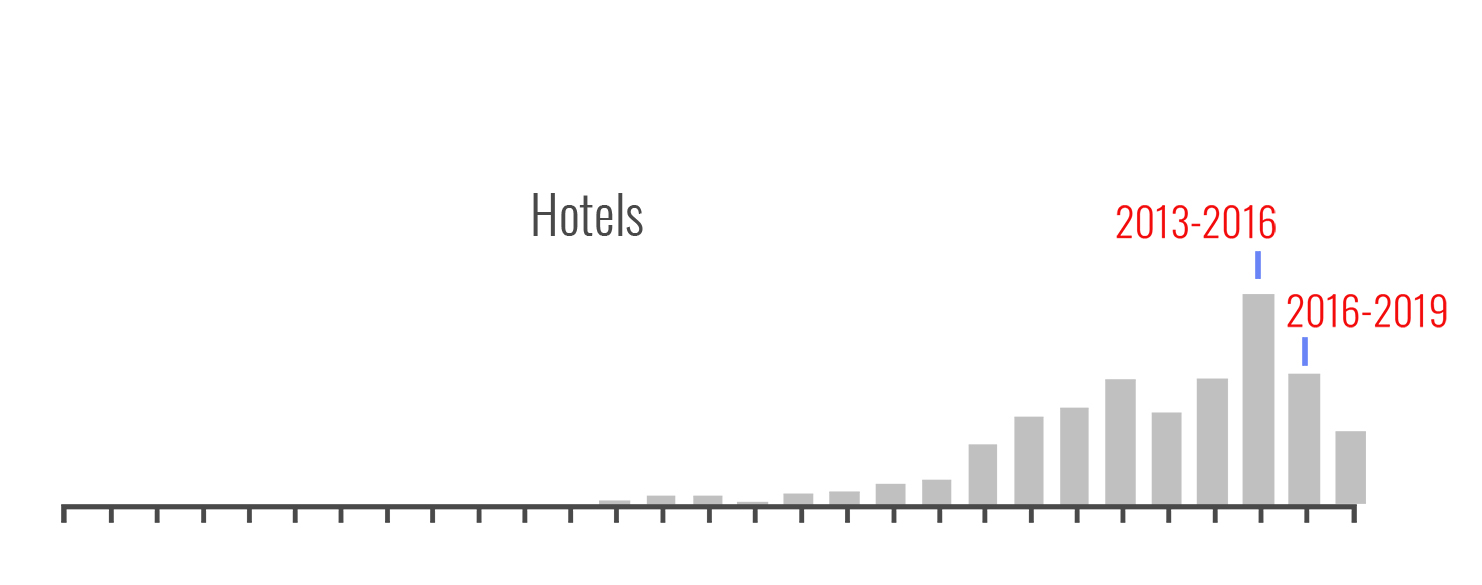
https://patents.google.com/?q=Hotels&oq=Hotels
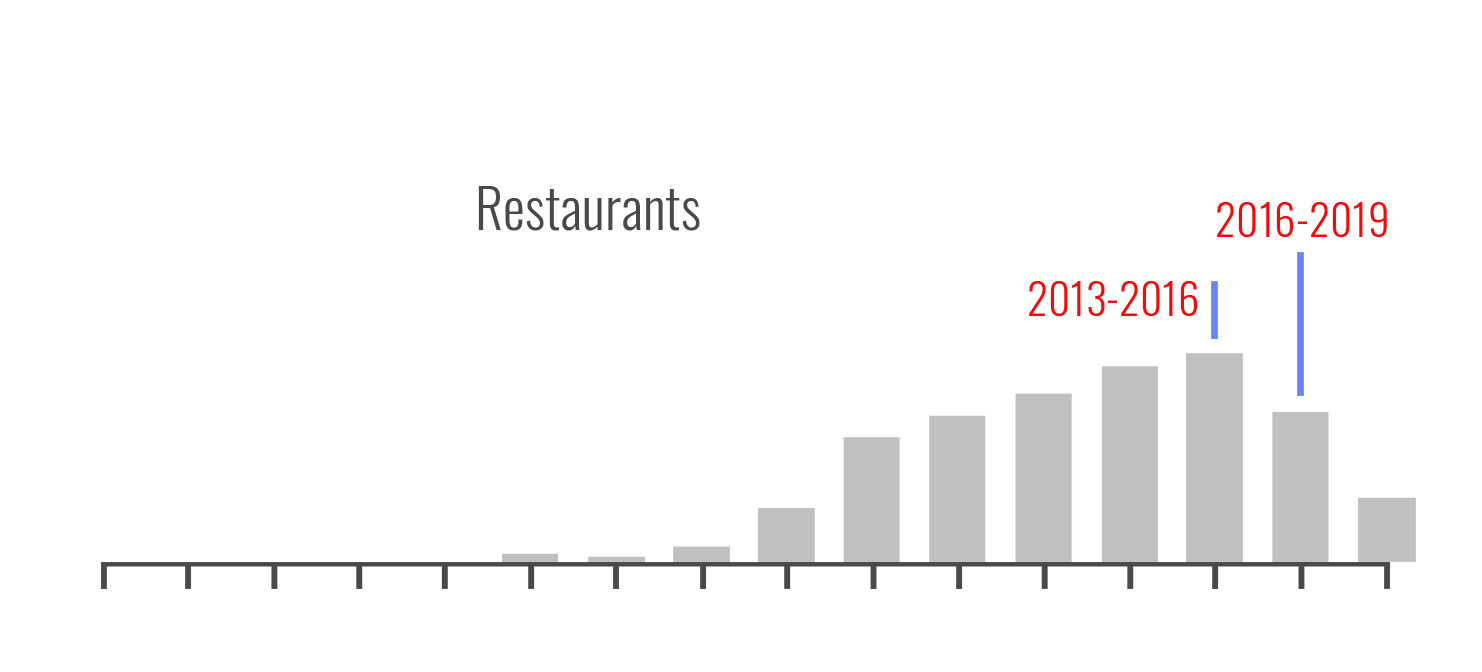
https://patents.google.com/?q=restaurants&oq=restaurants
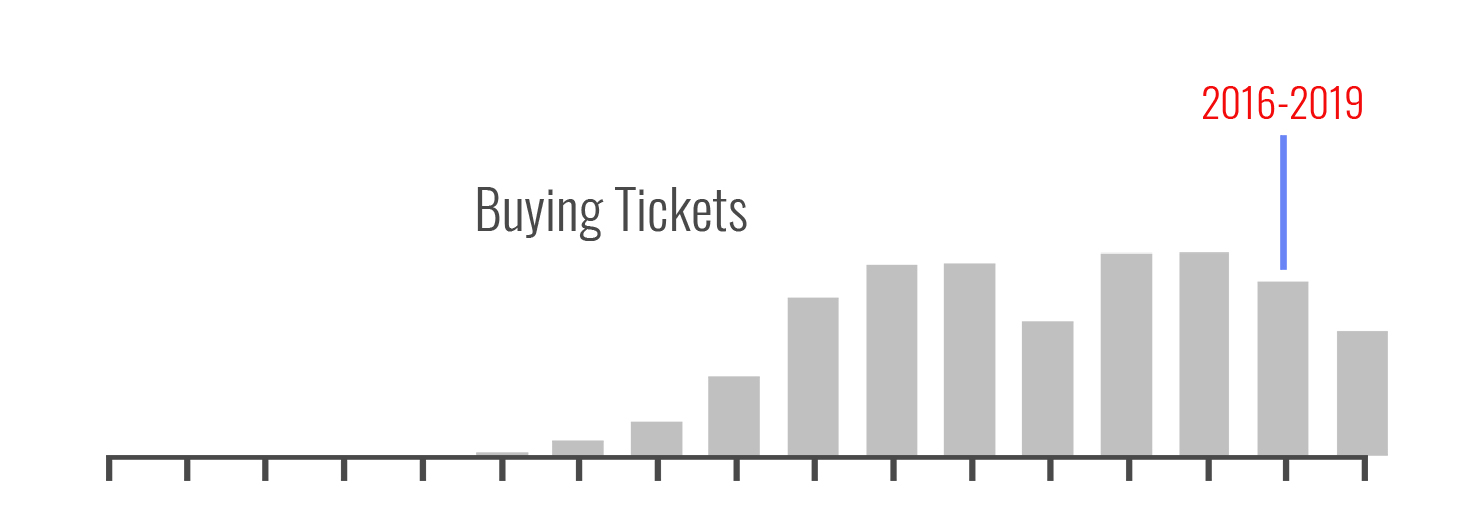
https://patents.google.com/?q=buying+tickets&oq=buying+tickets

https://patents.google.com/?q=Paper+media
And it is also clearly visible that for some period before the Pandemic, the number of patents increased in those industries that benefited most from the Pandemic.
We will repeat once again that this is the “Informational presentiment” (“Intuitive knowledge”).
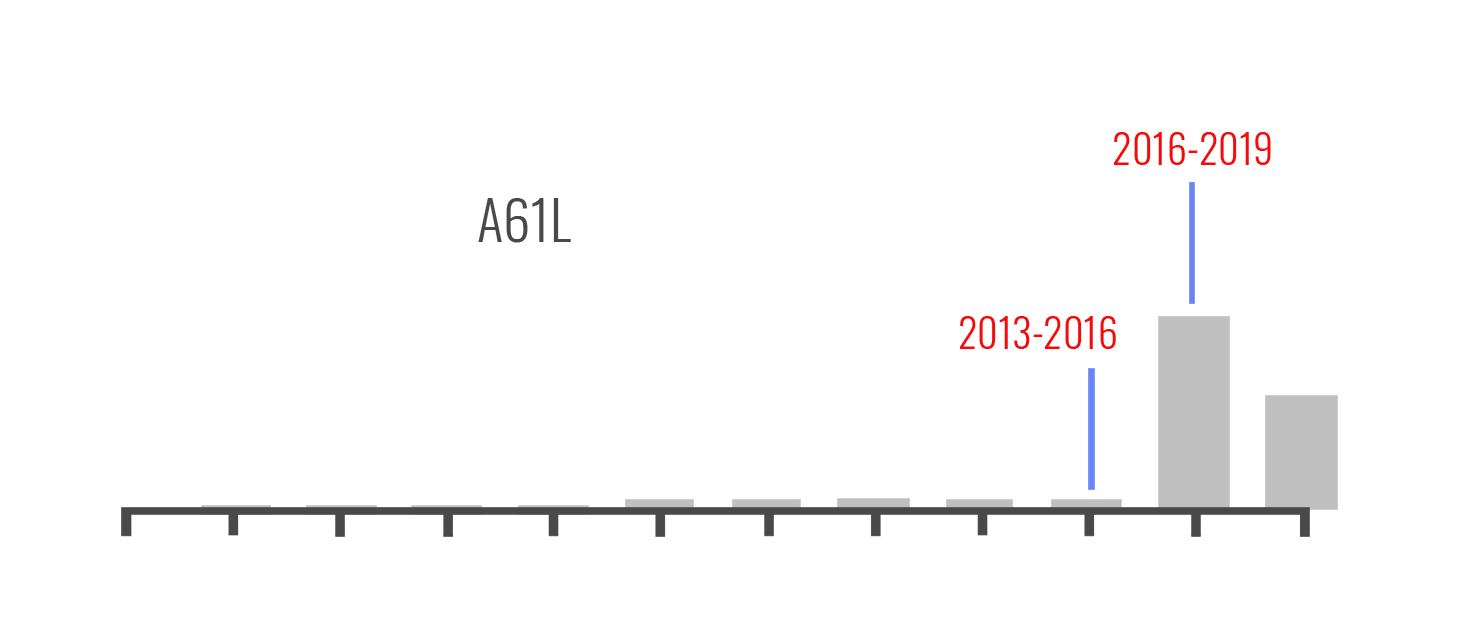
https://patents.google.com/?q=A61L&oq=A61L+
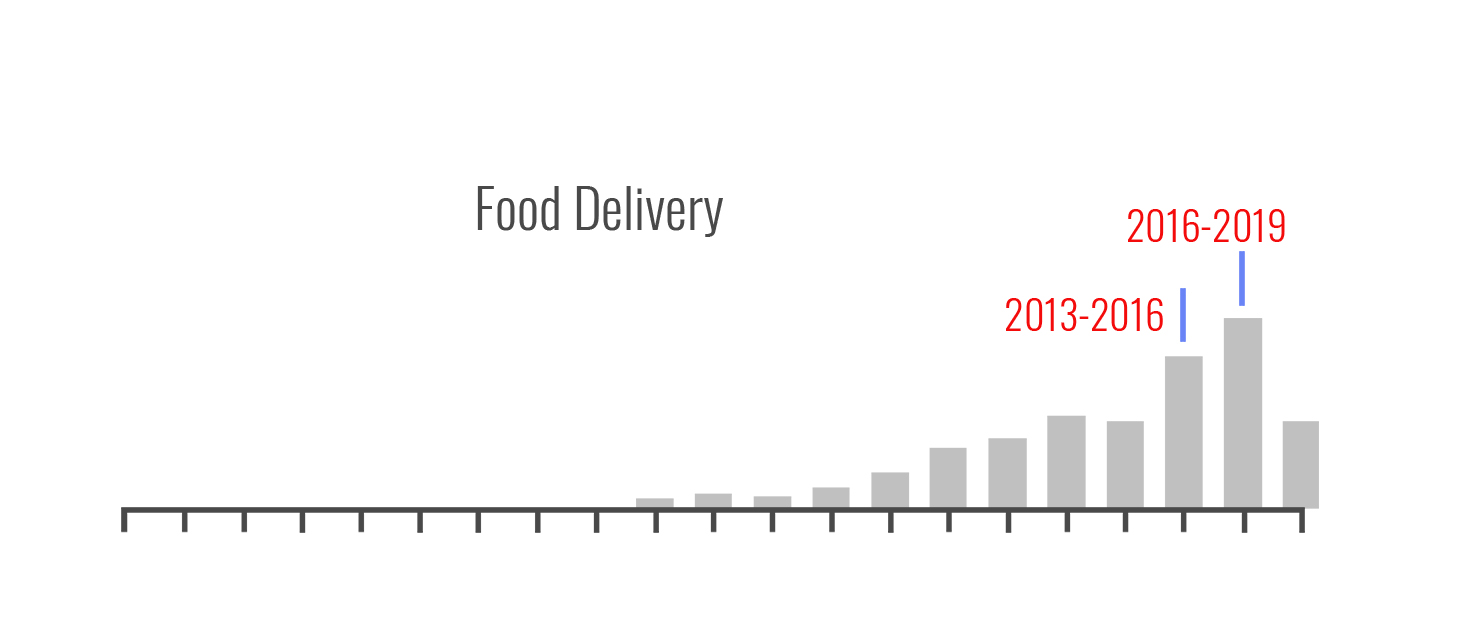
https://patents.google.com/?q=Food+delivery&oq=Food+delivery
An important question is how to identify catastrophic events.
How to recognize, based on patent information databases, when and where these events may occur.
It is possible to assume that if the changes identified in the patent information databases cover patents from all over the world, then the event will be of a planetary scale.
However, if the changes are related to a certain region or country, then the event will also be regional.
For example, it is possible to check what changes in patenting were before the Earthquake in Japan (Great East Japan Earthquake, 2011) or before the tsunami in Indonesia (Indian Ocean earthquake and tsunami, 2004).
And in which regions. It is also possible to see what changes were made in patenting (for example, survival tools) before the attack of the Russian army on Ukraine.
And, approximately, to predict what this war may be - local or global.
The presented results show well that such an approach to the study of patent information can be a good method of predicting catastrophic events (natural and social).
Along with other forecasting methods.
This is a really amazing result.
And we have some understanding of why “Informational Presentiment” is possible.
But, today, the most reasonable thing is to present this phenomenon as a “Black Box”.
That is, there is input data and there is output data, and what happens to them inside is unknown.
And, of course, this issue requires further detailed, in-depthresearch.
Other publications: